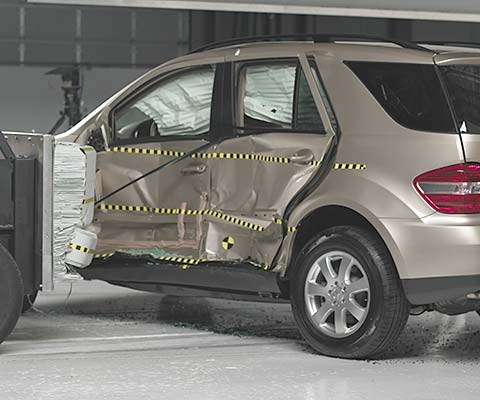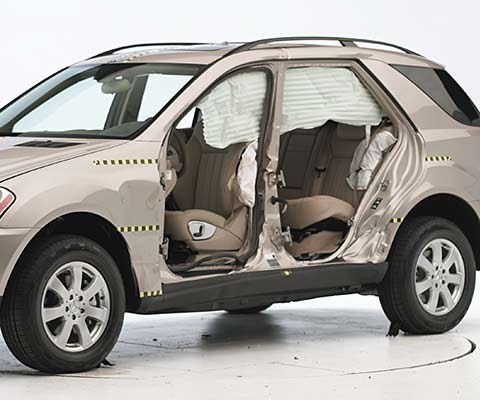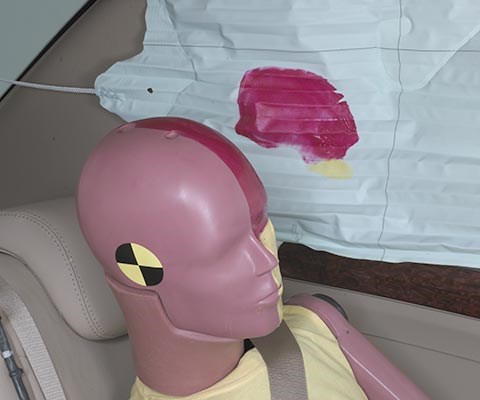Moderate overlap front: original test
Rating applies to 2006-11 models
Tested vehicle: 2006 Mercedes-Benz ML 500 4-door 4wd
The Mercedes-Benz M-Class was redesigned for the 2006 model year. Moderate overlap frontal ratings are assigned by the Institute based on a test conducted by Mercedes-Benz.
| Evaluation criteria | Rating |
|---|---|
| Overall evaluation | |
| Structure and safety cage | |
| Driver injury measures | |
| Head/neck | |
| Chest | |
| Leg/foot, left | |
| Leg/foot, right | |
| Driver restraints and dummy kinematics | |
Side: original test
Rating applies to 2007-11 models
Tested vehicle: 2006 Mercedes-Benz ML 350 4-door 4wd with standard front and rear head curtain airbags and standard front and optional rear seat-mounted torso airbags
The Mercedes-Benz M-Class was redesigned for the 2006 model year. Beginning with 2007 models, side torso airbags were made standard for second row seat occupants (they were optional in 2006 models).
| Evaluation criteria | Rating |
|---|---|
| Overall evaluation | |
| Structure and safety cage | |
| Driver injury measures | |
| Head/neck | |
| Torso | |
| Pelvis/leg | |
| Driver head protection | |
| Rear passenger injury measures | |
| Head/neck | |
| Torso | |
| Pelvis/leg | |
| Rear passenger head protection | |

View of the vehicle and barrier just after the crash test.

View of the vehicle after the crash with doors removed, showing the side airbags and damage to the occupant compartment.

Smeared greasepaint shows where the driver dummy's head was protected from being hit by hard structures by the side airbags.

Smeared greasepaint shows where the rear passenger dummy’s head was protected by the side airbag.
Head restraints & seats
Seat type: Seats without auto-adjust head restraints AHR
| Overall evaluation | |
|---|---|
| Dynamic rating | |
| Seat/head restraint geometry |
About the head restraint & seat test
Currently, IIHS tests apply only to front seats.
